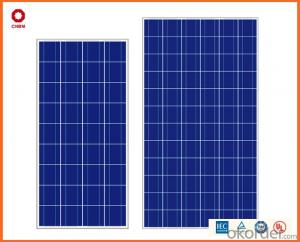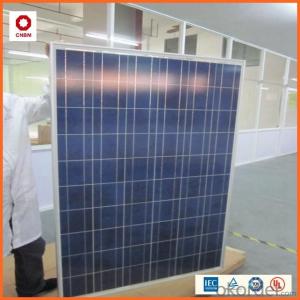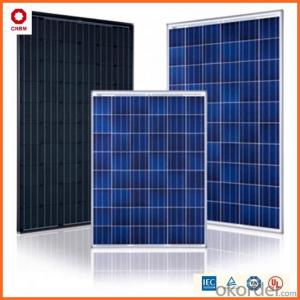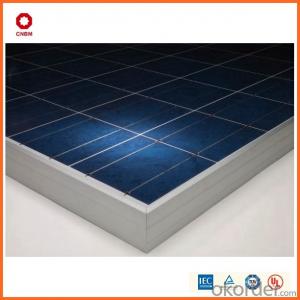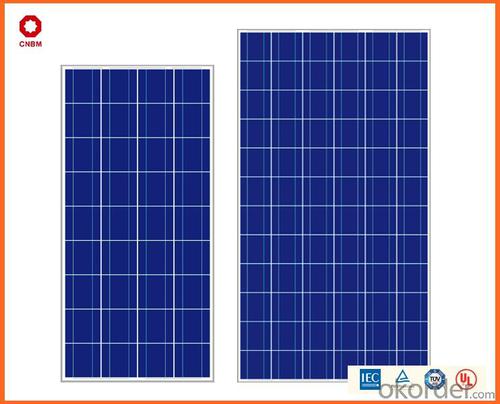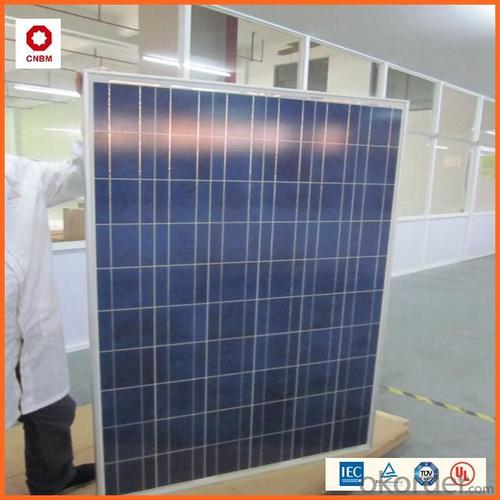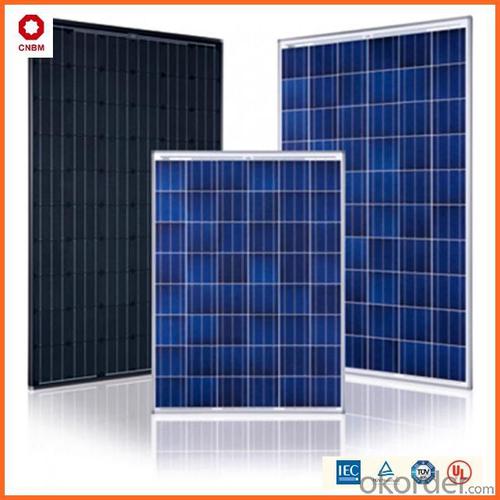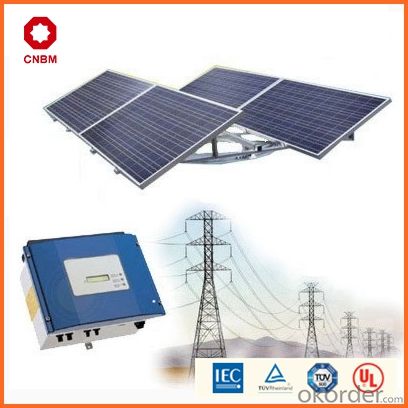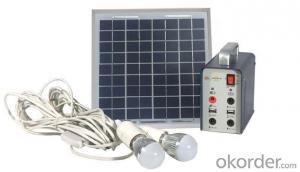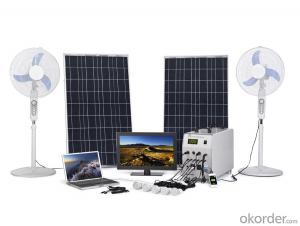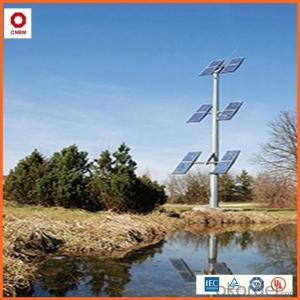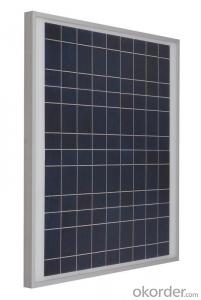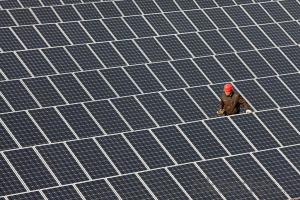John Maui Solar Energy Systems 50w Poly Small Solar Panels with Good Quality
- Loading Port:
- China main port
- Payment Terms:
- TT OR LC
- Min Order Qty:
- 1 watt
- Supply Capability:
- 10000000 watt/month
OKorder Service Pledge
OKorder Financial Service
You Might Also Like
Specification
Hot Sale !!! Quality and Safety of Small Poly Solar Panel 25~85w
1. Rigorous quality control meets the highest international standards.
2. High-transmissivity low-iron tempered glass, strong aluminium frame.
3. Using UV-resistant silicon.
4. IS09001/14001/CE/TUV/UL
Warranties of Small Poly Solar Panel 25~85w
1. 10 years limited product warranty
2. 15 years at 90% of the minimal rated power output
3. 25 years at 80% of the minimal rated power output
Specification
Characteristics of Poly solar panels CNBM (25-85W) | |||||
Max Power Voltage Vmp(V) | 30.3 | 30.8 | 31.1 | 31.4 | 31.85 |
Max Power Current Imp(A) | 7.60 | 7.64 | 7.73 | 7.81 | 7.85 |
Open Circuit Voltage Voc(V) | 36.1 | 36.6 | 37 | 37.3 | 37.68 |
Short Circuit Current Isc(A) | 8.50 | 8.55 | 8.65 | 8.75 | 8.85 |
Max Power Pm(W) | 230W | 235W | 240W | 245W | 250W |
Temperature Coefficient of Cells Poly solar panels CNBM (25-85W) | |
NOCT | 45± 2 |
Temperature Coeffucients of Isc | 0.0492 |
Temperature Coeffucients of Voc | -0.3374 |
Temperature Coeffucients of Voc | -0.4677 |
Mechanical Data of Poly solar panels CNBM (25-85W) | |
Dimension | 1638 × 982 × 40 mm |
Weight | 19.5 kg |
No. of Cells and Connections | 60 (6 ×10) |
Tolerance | 0 ~ + 5 W |
Cell | Monocrystalline Cell 156 × 156 mm |
Packing | 624 Pcs/40ft(H) Container |
Limits of Poly solar panels CNBM (25-85W) | |
Operating Temperature | -40 to +85 |
Storage Temperature | -40 to +85 |
Max System Voltage | 1000VDC(IEC) / 600VDC(UL) |
Features of our products:
• High conversion efficiency mono/poly-crystalline amorphous silicon solar cells
• Modules incorporate high performance bypass diodes to minimize the power drop caused by shading
• High transmittance, low-iron tempered glass
• High performance EVA encapsulant to prevent destroying and water.
• AI frame: without screw, corner connection. 8 holes on the frame can be installed easily
• Good performance of preventing from atrocious weather such as wind and hails
• Certifications: CE IEC TUV VDE UL, Class I
• 10 years 90% power output warranty

Shipping of Small Poly Solar Panel 25~85w
By Sea | Delivery from Shanghai or Ningbo seaport |
By Air | Departure from Shanghai Pudong Airport |
By Express | Post by DHL, EMS, UPS, TNT. |
Features of our products:
• High conversion efficiency mono/poly-crystalline amorphous silicon solar cells
• Modules incorporate high performance bypass diodes to minimize the power drop caused by shading
• High transmittance, low-iron tempered glass
• High performance EVA encapsulant to prevent destroying and water.
• AI frame: without screw, corner connection. 8 holes on the frame can be installed easily
• Good performance of preventing from atrocious weather such as wind and hails
• Certifications: CE IEC TUV VDE UL, Class I
• 10 years 90% power output warranty
As a professional Solar Panel manufacturer and Supplier in China, we have our customers come around the whole world and our specialization has got a worldwide recognition. Meanwhile, with our superior quality, competitive price, prompt and excellent service, As main role in trade section of CNBM Group, CNBM International Corporation supplies products including Monocrystalline Solar Panel, Polycrystalline Solar Panel ( multicrystalline silicon Solar Panel) have received and enjoyed famous reputation in many countries and regions in the world.
- Q: Can solar energy systems be used in remote areas?
- Yes, solar energy systems can be used in remote areas. They are particularly well-suited for such locations because they do not require a connection to a centralized power grid. Solar panels can be installed in remote areas to harness sunlight and generate electricity, providing a sustainable and reliable source of energy. This makes solar energy systems an ideal solution for powering remote communities, scientific research stations, or off-grid projects in isolated regions.
- Q: How does the installation of solar panels affect the roof's warranty?
- The installation of solar panels typically does not void the roof's warranty. However, it is important to consult with the roofing manufacturer and installer to ensure that the installation process does not breach any warranty conditions.
- Q: Can solar energy systems be used in areas prone to hurricanes or earthquakes?
- Yes, solar energy systems can be used in areas prone to hurricanes or earthquakes. While these natural disasters can cause significant damage, solar energy systems are designed to withstand harsh weather conditions. Solar panels are built to be durable and are tested to meet stringent standards for wind and impact resistance. Additionally, solar energy systems do not have any moving parts, which reduces the risk of damage. However, it is important to ensure proper installation and maintenance of solar systems to enhance their resilience in disaster-prone areas.
- Q: Can solar energy systems be used for powering electric gates?
- Yes, solar energy systems can be used to power electric gates. Solar panels can convert sunlight into electricity, which can then be used to operate electric gates. This provides a sustainable and environmentally friendly way to power gates, reducing reliance on traditional electricity sources.
- Q: Can solar energy systems be used for charging mobile devices?
- Yes, solar energy systems can be used for charging mobile devices. Solar panels convert sunlight into electricity, which can then be used to charge mobile devices through a charger or power bank. This renewable energy source is a sustainable and eco-friendly alternative for charging mobile devices, especially in areas with limited access to electricity grids.
- Q: Can solar energy systems be used for powering off-grid eco-tourism destinations?
- Yes, solar energy systems can be an excellent choice for powering off-grid eco-tourism destinations. These systems harness the power of the sun to generate electricity, making them a sustainable and renewable energy source. Solar panels can be installed in remote areas, providing a reliable power supply for eco-tourism facilities such as lodges, campsites, or visitor centers. Additionally, solar energy systems can reduce reliance on fossil fuels, minimize carbon emissions, and align with the eco-friendly principles of such destinations.
- Q: Can solar energy systems be used in areas with limited access to security?
- Yes, solar energy systems can be used in areas with limited access to security. Solar energy systems are generally safe and do not pose significant security risks. They do not require heavy infrastructure or extensive maintenance, making them suitable for remote or insecure locations. Additionally, solar systems can operate independently, reducing the need for external power sources and minimizing potential vulnerabilities.
- Q: Can a solar energy system power my entire home?
- Yes, a solar energy system has the potential to power your entire home. The size and capacity of the solar energy system will determine its ability to meet your home's energy needs. To determine the appropriate size, factors such as the average daily energy consumption of your household, the available roof or ground space for solar panels, and the amount of sunlight your location receives throughout the year need to be considered. By installing a properly sized solar energy system and using energy-efficient appliances, LED lighting, and energy-saving practices, it is possible to generate enough solar energy to power your entire home and even sell excess electricity back to the grid. It is advisable to consult with a professional solar installer to assess your specific energy requirements and design a solar energy system that meets your needs.
- Q: What is the difference between solar thermal and solar PV systems?
- Solar thermal systems use sunlight to heat water or other fluids, which can then be used for various purposes like heating buildings or generating electricity. On the other hand, solar PV (photovoltaic) systems directly convert sunlight into electricity using solar panels made up of photovoltaic cells. While solar thermal systems are primarily used for heating, solar PV systems are designed for generating electricity.
- Q: What is the payback period for installing a solar energy system?
- The payback period for installing a solar energy system can vary depending on various factors such as the initial cost of the system, the amount of energy it generates, and the cost of electricity in your area. However, on average, the payback period for a residential solar energy system is typically between 5 to 10 years. This means that it takes around 5 to 10 years for the savings on your electricity bills to equal the upfront cost of installing the system. After the payback period, you can enjoy free or significantly reduced electricity costs for the remaining lifespan of the system, which is typically around 25 to 30 years. It is important to note that government incentives, tax credits, and net metering programs can further reduce the payback period and increase the overall financial benefits of installing a solar energy system.
Send your message to us
John Maui Solar Energy Systems 50w Poly Small Solar Panels with Good Quality
- Loading Port:
- China main port
- Payment Terms:
- TT OR LC
- Min Order Qty:
- 1 watt
- Supply Capability:
- 10000000 watt/month
OKorder Service Pledge
OKorder Financial Service
Similar products
Hot products
Hot Searches
Related keywords
